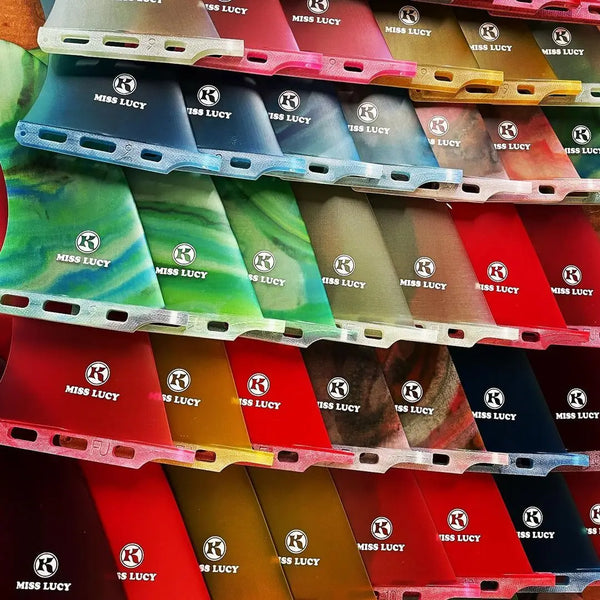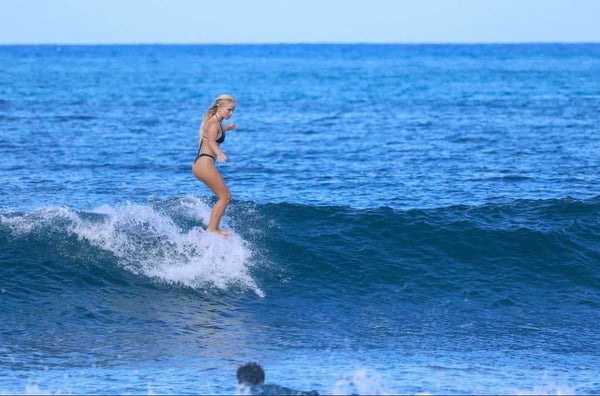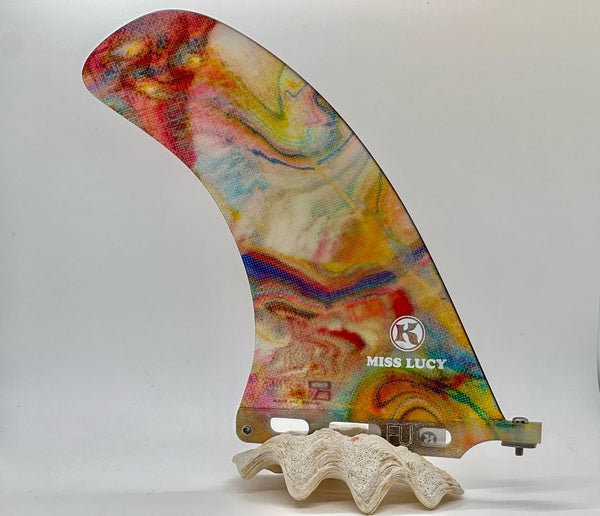The Ultimate Guide to the Kanoa Dahlin Miss Lucy Noseriding Fin
Share
Surfing in Hawaii presents a unique set of challenges and thrills, largely due to its powerful and sectioned waves. To navigate these waters with grace and agility, a surfer needs not just skill but also the right equipment. Enter the Kanoa Dahlin Miss Lucy noseriding fin, a game-changer in the world of longboarding. This blog post delves into the design features, performance in Hawaii waves, and a comparison with traditional pivot fins to showcase why the Miss Lucy stands out as the perfect noseriding fin for Hawaiian waves.
Design Features
The Miss Lucy noseriding fin, created by the renowned surfer Kanoa Dahlin, is a masterpiece of design and functionality. Unlike traditional pivot fins, which are known for their straight shape, the Miss Lucy boasts a significant amount of rake. This design choice is not merely aesthetic; it serves a critical function in enhancing the fin's performance on the waves.
One of the standout features of the Miss Lucy is its thick foil, a characteristic it shares with traditional pivot fins. This thickness is crucial for allowing the fin to sit comfortably in the pocket of the wave, providing stability and control when noseriding. However, the added rake sets the Miss Lucy apart, offering surfers the ability to pump down the line for extra speed and execute smooth, rounded turns to re-enter the pocket for optimal noseriding.
Performance in Hawaii Waves
Hawaii's waves are notorious for their sections, requiring surfers to generate additional speed to navigate through them successfully. The Miss Lucy fin is specifically designed to tackle this challenge. Its unique rake allows surfers to pump for speed effortlessly, making it easier to connect sections and maintain momentum. This capability is particularly valuable in Hawaii, where the ability to quickly gain speed and perform controlled turns can make the difference between a good ride and a wipeout. Moreover, the smooth style of turning enabled by the Miss Lucy's design contrasts sharply with the abrupt, left-to-right shifts characteristic of traditional pivot fins. This smoother turning mechanism not only looks more stylish but also allows for a more seamless re-entry into the pocket for prolonged noseriding.
Comparison with Traditional Pivot Fins
While traditional pivot fins have long been the go-to for noseriding, the Miss Lucy fin introduces a new paradigm. The key difference lies in the rake. Traditional pivot fins, with their straighter shape, are excellent for stability and control directly in the pocket of the wave. However, they often lack the versatility needed to navigate the dynamic conditions of Hawaiian waves effectively.
The Miss Lucy's rake provides the best of both worlds: the ability to sit in the pocket for classic noseriding while also offering the maneuverability to pump for speed and execute stylish, rounded turns. This dual functionality makes it a superior choice for surfers looking to excel in Hawaii's challenging surf.

Crafted by the experts at Fins Unlimited, a company with a rich history in the surf industry, the Kanoa Dahlin Miss Lucy noseriding fin represents the perfect balance of performance and style. Its innovative design, tailored specifically for the unique demands of Hawaiian waves, offers surfers an unparalleled noseriding experience. Whether you're a seasoned longboarder or looking to improve your noseriding skills, the Miss Lucy fin is a worthy addition to your quiver, promising smoother turns, enhanced speed, and, ultimately, more enjoyable rides on the beautiful waves of Hawaii.
SHOP MISS LUCY FINS
Read More 👈
UNDERSTANDING FIN OPTIONS FOR LONGBOARDS
UNDERSTANDING FIN RAKE AND WHY IT IS SO IMPORTANT
TRADITIONAL NOSERIDERS VS. INVOLVEMENT LOGS
